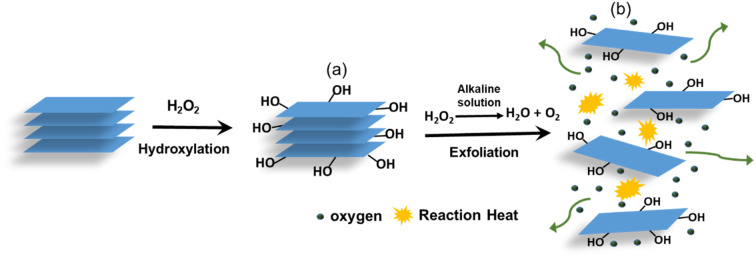- Record: found
- Abstract: found
- Article: found
High-yield synthesis of hydroxylated boron nitride nanosheets and their utilization in thermally conductive polymeric nanocomposites†

Read this article at
Abstract
Hexagonal boron nitride nanosheets (BNNSs) possess remarkable potential for various applications due to their unprecedented properties. However, the scalable production of BNNSs with both expansive surface and high solubility continues to present a significant challenge. Herein, we propose an innovative and efficient two-step method for manufacturing hydroxyl-functionalized BNNSs (OH-BNNSs). Initially, hydroxyl groups are covalently attached to bulk hexagonal boron nitride (h-BN) surfaces through H 2O 2 treatment. Then, the hydroxyl-functionalized h-BN undergoes exfoliation on account of a sudden increase in interlayer gas pressure generated by the vigorous decomposition of H 2O 2 in alkali solutions, resulting in the creation of OH-BNNSs. This approach produces relatively large flakes with an average dimension of 1.65 μm and a high yield of 45.2%. The resultant OH-BNNSs exhibit remarkable stability and dispersibility in a range of solvents. Their integration into thermoplastic polyurethane (TPU) significantly enhances both thermal conductivity and stability, attributed to the excellent compatibility with the resin matrix. This study represents a significant advancement in the functionalization and exfoliation of h-BN, opening new avenues for its promising applications in polymer composites.
Abstract
Schematic illustration of the hydroxylation and exfoliation of h-BN powders.
